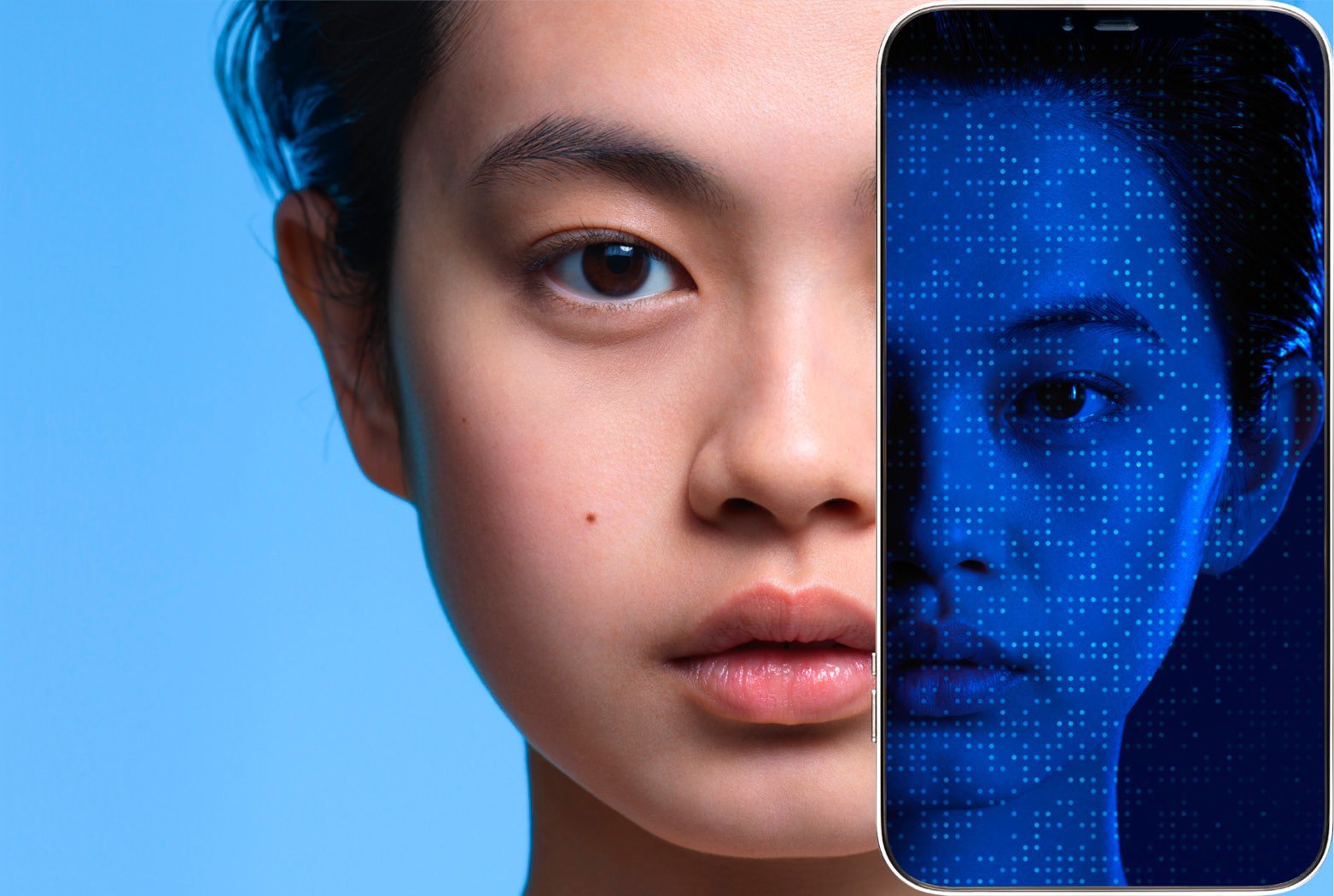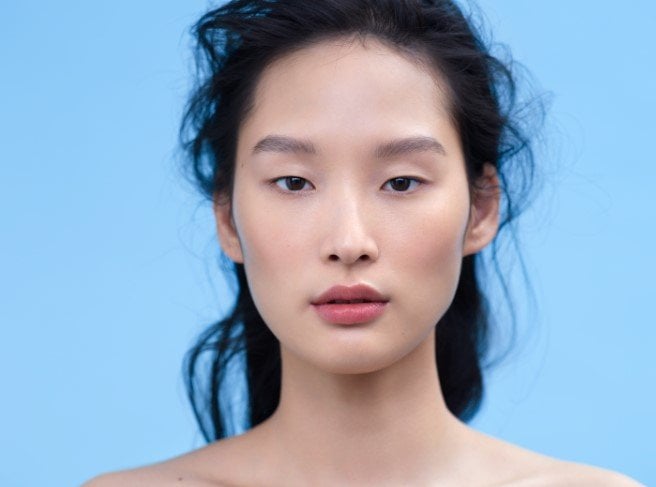WHAT IS THE DIFFERENCE
BETWEEN UVA AND UVB?
UV rays only account for 5% of the sun rays that reach the earth, but they are very powerful. There are several kinds. While UVC rays are usually blocked by the ozone layer, UVA and UVB rays reach the earth and have an effect on the skin.
UVA: A as in "Ageing" or "Allergies"
Occurring throughout the year and even on cloudy days, UVA rays account for 95% of the ultraviolet rays that touch the earth's surface. They are tenacious too as they can pass through clouds, glass and the epidermis.
Unlike UVB which causes sunburn, UVA rays are painless but they are not harmless. On the contrary, they can penetrate very deep within the skin to reach the cells of the dermis (skin’s deeper layer). By producing free radicals, they can cause long-term damage and bring about:
- Photoageing: skin’s support structures (collagen and elastin fibres) are modified resulting in a slackening effect and wrinkle formation.
- Sun intolerance, commonly referred to as sun allergy (redness, itching, polymorphous light eruption).
- Pigmentation disorders (pregnancy mask, dark spots).
- Development of skin cancers.
Click HERE to jump to UVA protection.
UVB: B as in "Burns" or "Bronzed skin"
UVB rays make up just 5% of the UV rays reaching earth. Unlike UVA, they are stopped by clouds and glass, but they can penetrate the epidermis. They are responsible for tanning, but also sunburn, sun allergy reactions and skin cancers.
Click HERE to jump to UVB protection.
You’ve understood it is important to protect the skin from both UVA and UVB rays.
Click HERE for information on how to choose the right sunscreen.
WHAT ARE
LONG UVA?
Long UVA rays: an ever-present and invisible danger
All year round, without realizing it, we are constantly exposed to long UVA rays. This is known as passive exposure. These solar rays can travel through clouds, glass and even the epidermis down to the dermis (skin’s deeper layer).
What are the effects of long UVA rays?
The longer the UVA rays, the more deeply they penetrate the skin. They sometimes cause skin damage which can be irreversible:
- Pigmentation and color disorders, like pregnancy mask, dark spots and a grayish complexion.
- Sun allergies and intolerances: Like all UV rays, long UVA rays can trigger the appearance of redness, spots on the skin and itching. Click HERE to learn more about sun allergy.
- Photo-ageing or premature ageing: Reduction in the skin's elasticity and slackening, which favors the appearance of wrinkles.
Long UVA make up 75% of all UV radiation, so any protection worth considering must provide broad-spectrum UVA-UVB coverage all the way to long UVA.
WHAT DO THE NUMBERS
ON SUNSCREEN MEAN?
Understanding sunscreen protection factors
Choosing the right sunscreen can be a real dilemma! With all the different names, numbers and abbreviations (SPF, PPD), it's not always easy to find what you need. So what do you need to know to get the best protection?
UVB protection: the SPF system
UVB protection is measured using a system called SPF (sun protection factor). In order to avoid sunburn, you need to choose the right SPF. It is indicated on all sunscreens, and there are four levels of protection: low (factor 6 to 10), medium (15 to 25), high (30 to 50) and very high (50+). But what do these sunscreen SPF numbers actually mean?
Let’s consider an example:
Let’s say Laura is a fair-skinned person who can normally stay in the sun for 10 minutes before burning.
If she applies an SPF of 10, the time taken to burn is multiplied by the sun protection factor of 10, so she will be able to stay in the sun for 10 x 10 = 100 minutes before burning.
But bear in mind that she’d need to apply a generous, even layer to be protected. As a general rule of thumb, you probably need more cream than you think. A golfball-sized amount for the whole body is a rough guide.
UVA protection: the PPD system
UVA protection has its own system, called PPD (persistent pigment darkening), to measure protection. As with SPF, a higher PPD means stronger and longer protection against the harmful effects of UVA rays. The system works in the same way as the SPF system, so a PPD of 10 means it will take about 10 times longer for skin to turn red compared with unprotected skin. Again, think “more is more” when it comes to sunscreen application.
DIFFERENT PHOTOTYPES REACT
MORE OR LESS QUICKLY TO THE SUN
While some skins tan easily, others are more fragile and need a constantly high protection factor. With a high protection factor, your skin is better protected. However, product must be re-applied every 2 hours, or after swimming or intense sweating.
What is my phototype?
Your phototype is a classification that reflects how your skin reacts to the sun. There are six types:
- Phototype I: milky skin (redheads), always burns, never tans, many freckles.
- Phototype II: fair skin, always burns, sometimes achieves a slight glow, many freckles.
- Phototype III: fair to dark skin, sometimes burns, always tans (medium tan), some freckles.
- Phototype IV: dark skin, never burns, always tans (dark tan), no freckles.
- Phototype V: brown skin, never burns, always tans (very dark tan), no freckles.
- Phototype VI: black skin, never burns, no freckles.
SO, WHAT SUNSCREEN
SHOULD I CHOOSE?
What is the best UVA, UVB and long UVA protection for sensitive skin?
To stay safe in the sun, you need a sun protection that combines UVA, UVB and long UVA protection. Make sure your product specifically mentions long UVA, as not all formulas protect against this subtype of UV radiation. If you have fair skin with light hair and eyes, you will need high or very high protection (SPF 30 - 50+), whereas you may be able to use a lower protection factor if you have darker skin. If you have sensitive skin, you need to use a brand that specifically formulates products suitable for sensitive skin.
For nearly 30 years, La Roche-Posay Dermatological Laboratory has developed a range of sunscreens dedicated to protecting all types of sensitive skin, for both adults and children. With its effective sun protection against UVA, UVB and long UVA rays, the ANTHELIOS range offers you protection that's up to twice as strict as the European recommendation, while maintaining excellent tolerance even on sensitive skin.
A COMPLETE RANGE FROM THE REFERENCE
DERMATOLOGICAL SUNCARE BRAND
Recommended by dermatologists: Your skin in safe hands
Available in liquids, oils, milks, gels or sprays, the ANTHELIOS range from dermatologist’s partner brand La Roche-Posay offers you a wide choice of textures that combine comfort and protection, without compromising on tolerance for frequent use. Anthelios respects the needs and specific requirements of each skin type and its products are available in different formats and at different levels of protection (high SPF 30 protection or very high SPF 50+ protection). The combination of high UVA and UVB protection protects you against the immediate unpleasant effects of the sun such as sunburn, but also long-term damage like photoaging.
WHAT IS THE BEST
DAILY SUNSCREEN FOR THE FACE?
Which sunblock should I choose for my sensitive facial skin
If you have sensitive skin and are looking for effective daily sunscreen for the face, your go-to option is the ANTHELIOS range from the sensitive skin expert and dermatologist’s partner brand La Roche-Posay. All Anthelios products are suitable for sensitive skin and offer balanced UVA-UVB protection all the way to long UVA.
NEED
A RECAP?
How to select sun protection
- Your product should offer balanced broad-spectrum UVA-UVB protection all the way to long UVA rays.
- If you have fair skin and light eyes, opt for high or very high protection (SPF 30 - 50+).
- If you have sensitive skin, look for products specifically formulated for this skin type, to avoid reactions.
- The most advanced products incorporate anti-oxidants such as Baicalin to help reduce the damage caused by long UVA.
- The ANTHELIOS range from the sensitive skin expert and dermatologist’s partner brand La Roche-Posay offers balanced UVA-UVB-long UVA protection going beyond European recommendations.






